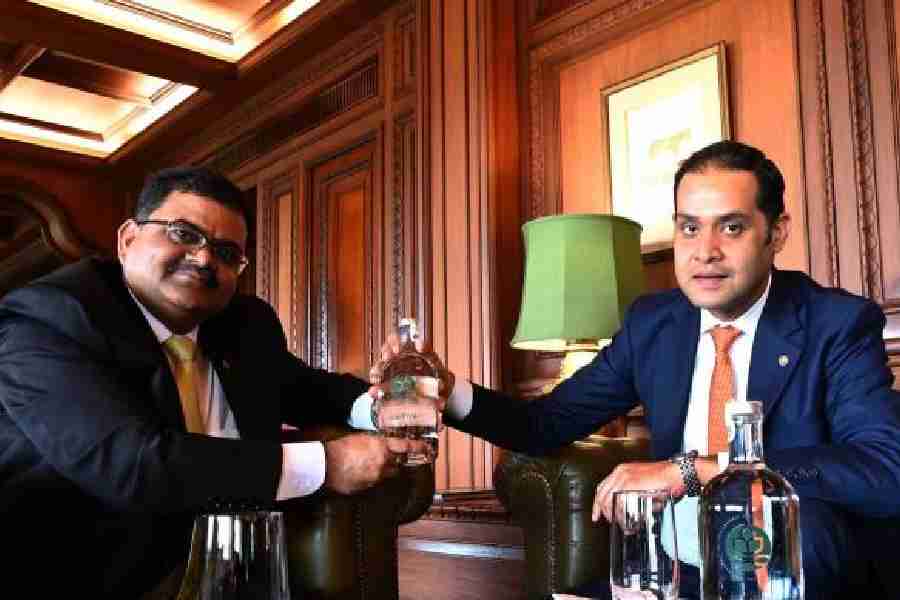Taj Bengal, the iconic five-star destination in Alipore, now has another feather on its cap. It is now completely powered by green energy, thereby cutting down 8,000 metric tonnes of carbon emissions.
“Taking forward the vision of IHCL’s ESG+ framework of Paathya, we are proud to share that Taj Bengal has set a benchmark of being 100 per cent powered by renewable energy. This achievement advances our transition to a more sustainable and low-carbon future, reducing the CO2 emission by 8,000 metric tonnes annually,” said K. Mohanchandran, senior vice-president, operations, East and North East, IHCL.
t2 spoke to hotel manager Arnab Chatterjee who took us through the various pillars of Paathya, along with Prasenjit Burman Roy, area engineering director, East.
Here’s getting you excerpts...
Taj Bengal is now 100 per cent green. What exactly does that mean?
All our green initiatives are a part of the Paathya program that propagates environmentally sustainable culture across all IHCL properties. We are the first IHCL hotel in India to be using 100 per cent green energy.
What this means is that our main purpose is to use renewable energy in order to reduce carbon footprints. There are various ways to use this energy. One way is to install solar plants etc. but that’s a space crunch in this property. So what we did was an open access policy. This means that a power aggregator is generating for me and I’m buying it at a premium from them. We have tied up with CESC and we’re getting green energy from them. We are proud to say that as soon as you are stepping into Taj Bengal, you’re stepping into a green zone. We will reduce around 8,000 metric tonnes of carbon emissions per year. We all talk about global warming, but we’ve taken the step forward to act on it.
For how long did you and the team deliberate before deciding and how long did the whole transformation take?
At the unit level, we were struggling to get this done. Due to an atrium-style lobby, we were unable to use the terrace for solar energy. Then we started thinking out of the box. Then we contacted CESC and got the green energy for an added tariff. Overall Rs 48 lakh additional per year will be spent to make sure we get green energy.
From keycards to toiletries, the theme of Paathya runs deep. Take us through the various areas of the hotel that have been transformed by this theme.
We’ve changed housekeeping amenities. We have a bottling plant inside the hotel, all rooms, public areas, restaurants and banquets use this water. From your shaving razor to the comb, to brushes as well as your room key card, we’ve used wood and replaced plastic for everything.
What are some of the other measures taken to promote sustainable energy on the property?
We have partnered with Tata Power to get an EV charging station that can be used by all private cars that come to the hotel. One of the P’s of Paathya is progress. We have a theme of 100 per cent green hotels. We are providing corporates with the option of holding green meetings, which are meetings that minimise carbon footprint where everything from power to water, to sustainable food, and use of local and sustainable products is promoted. More and more corporates are looking at green meetings and their meetings are partnered with us.
How do you plan to eliminate any remnant fossil fuel usage at the property?
Eliminating fossil fuels from the property is a major milestone goal for us. We use around 600 units of diesel every day, and we are replacing all steam-heated machines with electric machines for laundry boilers. We’re using green electricity for laundry boilers.
What are the plans for waste discharge and treatment?
We want to become a zero-discharge hotel. Currently, we are treating sewage water discharged from the hotel, and that will be used for WC flushing and cooling tower usage. This will be done by the end of the year so we will not discharge any wastewater in the sewage system. Paathya also makes sure we don’t use any plastic or pet water bottles. Glass bottles are reused. So we are also aiming to become a plastic-free zone.
A major pillar of the Paathya program is to preserve and promote local communities. How’s Taj Bengal tapping into that front?
We are supporting the patachitra artists from Pingla village (in Midnapore). The concierge has a day tour arranged to Pingla for guests looking to buy the art. This is done to preserve the heritage of Bengal, and also to promote local art and craft.
When it comes to staff, how is the promise of incorporating different regions and communities being achieved?
We hire young women from different parts of the Seven Sister states (in Northeast India) from rural and underdeveloped regions. We’ve also hired around five differently abled staff to promote inclusivity in the workplace.
